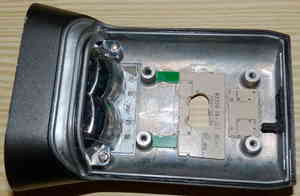
Driver and buttons boards will be glued to such spacers (cut from PCBs). The normal PCB thickness (1.6mm) is just right for linear regulators to touch the body for efficient cooling.

Driver and buttons boards will be glued to such spacers (cut from PCBs).
The normal PCB thickness (1.6mm) is just right for linear regulators to
touch the body for efficient cooling.
I'll put my charge connector where the original was (USB) - at the back. Another spacer for it on the right. Any Li-Ion charger will do the job (I use one from a bike light, 1A), after you solder appropriate connector on its cable. Paralleled cells should be similar to avoid lithium danger.
Note that the reflector has been filed in two places where it screws to the body - to make more longitudinal space for the batteries.
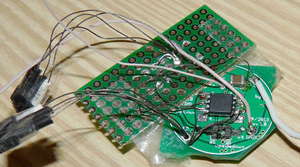
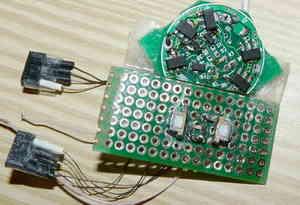
Driver board cut - we need only 5 linear regulators to give about 1.9A
for two paralleled Rebels.
Buttons - SMD from old cell phone.
The two connectors are for re-programming and the (optional) external buttons.
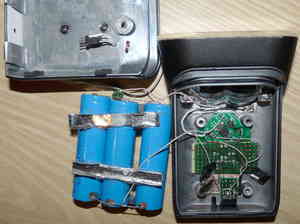
Battery cells are soldered with a stiff (thick, single) wire.
Looks uneven - to make the perfect fit inside the body.
The "-" side is soldered underneath - to not take up precious longitudinal
space.
The cells will rest (when headlight is kept upside-down) on two tin shelves (shown on the batteries). Each shelf will lie on the 2 protruding body stubs, and the shelf's tabs prevent it from sliding from stubs.
The back "claws" of the cover were filed a little to make it easier to close (won't reduce mechanical sturdiness).
I filed a little the big protruding cover stub (that gets pressed to the stock plastic battery holder) - to make more room for the central battery cell (although I think it's not necessary). But even with this, one can revert all back to using the original stock driver.
There's plenty of space inside for the boards and connections.
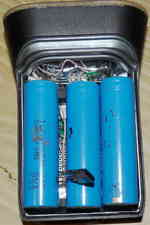
The cells are insulated from both ends from the headlight body
with thin hard-plastic pads.
The free longitudinal space (along the up-down axis in the photo plane) left
will then be just (barely) enough to close the cover.
Along right-left axis in the photo plane - there will be some play,
to be taken by two pads glued to the cover. Along the up-down,
perpendicular to the photo axis - depends on your shelves,
you can make it just right.
The small green board on "+" side (close to reflector) has a fuse wire soldered to it (my Li-Ion cells are not protected - bought cheap from old laptop batteries).
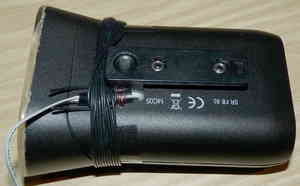
Cover winded with a wire to the main body. Alternatively one could
screw it for a perfect look.
I glued hard-plastic pads on the buttons to concentrate the force on small button's surface. Covered finally with an oval of scotch tape. The overall result - buttons are even with the top surface of the headlight body, and can be pressed easily, with a typical "click" - very nice feel.